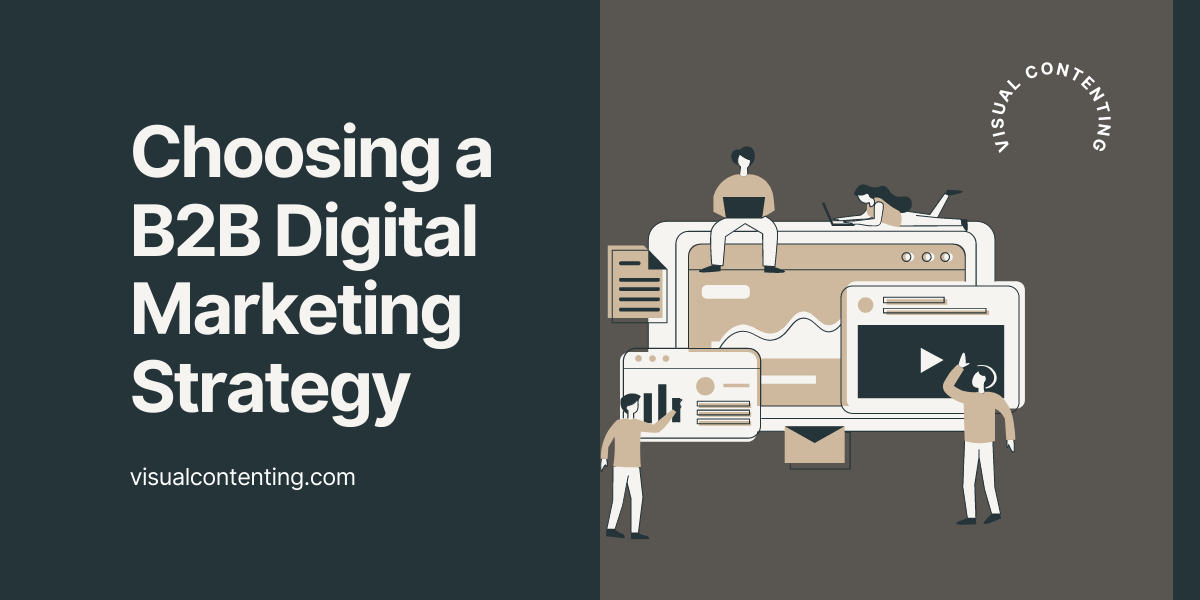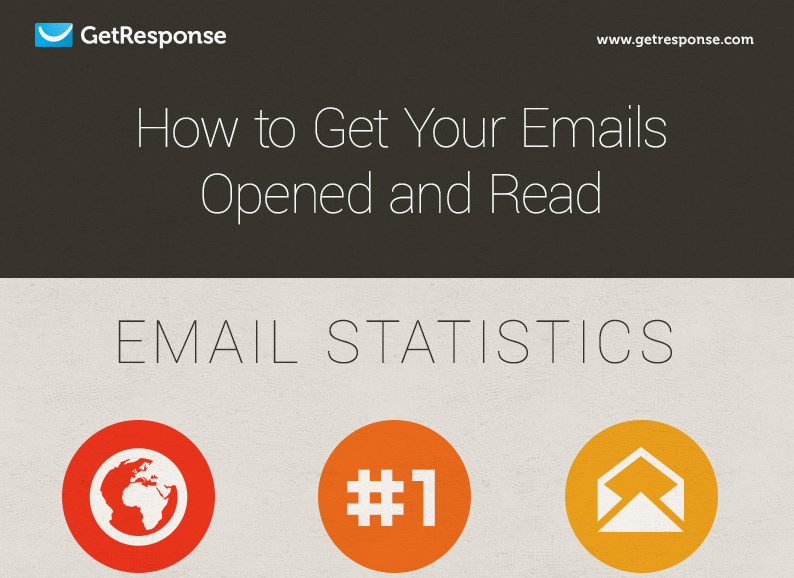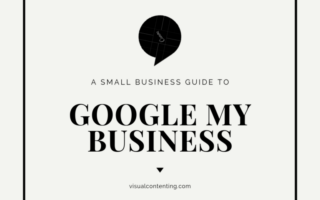A sound B2B digital marketing strategy can help companies reach potential customers and generate leads. It’s a highly effective way for businesses to increase revenue.
How do B2B marketers know which strategy they should choose and how do they implement one? Here’s how to select and implement a digital marketing strategy.
Things to Consider Before Choosing a B2B Marketing Strategy
Digital marketers can choose various strategies in B2B marketing, but it can take time to pick the best ones. They should consider the following factors relevant to the business before implementing tactics.
What Is the Company Selling?
In general, there are two types of offerings a company can sell — a good or service. Defining this is important because it will shape messaging, outreach and marketing tactics.
What Pain Points Will the Company Solve?
It’s important to research the target audience and understand the pain points that marketers must solve. First, marketers must understand their audience’s needs and if they can help them.
Next, they’ll identify what makes them different from their competitors. Tapping into this information can guide marketers’ messaging and the types of channels and tactics they should use to reach their audience.
Who Are the Competitors?
Marketers should check the methods their competitors currently use before implementing a strategy. Consider how other businesses in the industry use marketing channels to promote their brand.
Marketers generally analyze their competitors by looking at companies of the same size, demographics and offerings.
They determine what these competitors offer, their sales tactics and the content they publish online. Gathering this intel can provide better insight into how to stand out from the crowd.
What Type of Value Does the Audience Seek: Fundamental or Total?
Digital marketers must also determine the type of value the audience desires to understand what the company needs to position itself to succeed. A customer seeking fundamental value is entirely focused on the value of the good or service. On the other hand, prospects seeking total value want this and more — such as a high-end experience.
Keeping this information in mind can help marketers understand how to position their product or service alongside the direction of their marketing messages.
Examples of B2B Marketing Strategies to Try
After considering the different factors, the next step is to learn about the various strategies marketers leverage. Companies tend to focus on the other channels that produce the most leads, but prioritizing a strategy with the highest ROI may make more sense.
Here are a few of the strategies that marketers can shape to align their specific needs
1. Email Marketing
Email marketing is a cost-effective and efficient way to reach potential customers. In fact, it has the highest ROI. Companies receive $36 in return for every dollar spent, which is much higher than other channels.
That’s because email gives marketers direct access to potential customers without relying on intermediaries like search engines or social media.
However, B2B marketers should consider using email marketing with other strategies, such as ABM (account-based marketing. ABM prioritizes potential accounts and targets the most valuable ones.
Ultimately, email marketing involves personalized content to make clients feel valued. That will make them more likely to purchase a product or service.
2. Content Marketing
Content marketing has always been a reliable method for B2B marketers.
Consistent publishing helps customers recognize the firm as a top-quality source and thought leader. They feel they can trust the products and services and feel secure in their purchases.
Content marketing isn’t only for blogs. B2B marketers tend to focus on other forms, including:
- E-books
- White papers
- Images
- Infographics
- Podcasts
- Videos
- Webinars
3. Social Media Marketing
Most businesses have a presence on at least one social media channel today. Facebook and LinkedIn are the most popular choices in the B2B marketing space. Typically, companies use these platforms for advertising and achieving high engagement.
However, success on social media involves finding the sweet spot between creating engaging content and ensuring they keep their audience’s experience at an optimal level. One way to achieve this is to identify the types of content the target audience wants to see.
Therefore, social media content should align with the concerns of buyers and what they value most. Speaking their language is the key to attracting potential buyers.
How To Implement a B2B Digital Marketing Strategy
Digital marketing can take time to implement — and there’s no one-size-fits-all approach to acquiring new leads. Marketers can’t just throw up a few ads and hope for the best.
Instead, they need to have a purpose, develop a plan and carry out a solution. That way, they can execute their strategy, review their performance and optimize their approach carefully.
Once they create a marketing strategy, they should build a marketing funnel.
Build a Marketing Funnel Tailored to the Audience
A marketing funnel systematically routes potential customers to specific content based on how they interact with the brand. This tactic aims to increase the likelihood that the interested party will convert into a lead or a sale.
However, it’s important to keep the budget and approach in mind. This will affect how well the marketing funnel will turn out. It also takes longer than a sales cycle, as it is long term.
Here is an overview of what a marketing funnel looks like:
- Top of the funnel: This is the awareness stage where potential customers become aware of their problems and start looking for solutions. Tactics can include content marketing, social media marketing and social media ads.
- Middle of the funnel: At this time, customers fully realize their problem and start looking for a product or service to solve it. This stage is where marketers can start introducing their product or service — and differentiate it by highlighting its unique value proposition.
- Bottom of the funnel: This funnel stage is where the customer is ready to make a final decision. They’ve shortlisted a few goods and services, so it’s time for B2B marketers to take direct action. They should start eliminating any doubts the prospects have in mind by offering free trials, posting testimonials and providing consultations.
Test the User's Journey
Remember, the goal is to offer something the end user finds valuable. An empathetic approach will help the potential customer understand the brand’s value. With that in mind, marketers need to ensure the prospect has a smooth journey as they are going through the marketing funnel.
Therefore, marketers should go through the user’s journey to see if there are any obstacles. For example, someone who clicks on an ad should be able to find the content as promised without jumping through various hoops to find it.
It helps to make a note and adjust things if something seems to be missing or confusing.
Test, Measure and Optimize
When marketers first implement a B2B digital marketing strategy, there’s no guarantee it will bring results. That’s why it’s important to test each step and try various tactics.
B2B marketers often collect data when they can and measure the results. Basing opinions on intuition alone isn’t enough. That’s why there is a need to embrace data to help make informed decisions.
Once marketers gather their data and compare their results, they understand where they need to improve their strategy. Testing and optimization are crucial in every digital marketing effort.
Improving and implementing the best approach lets marketers achieve greater results each time — and ultimately help businesses reach their sales goals.
Keeping up With Success
B2B marketing is a long-term strategy, but it will evolve as audience needs change. The approaches marketers implement will also become more effective as time passes.
Continual improvement is the hallmark of every successful B2B digital marketing strategy. The marketing team can stay on track as change accelerates if it practices optimization.
Related Posts
Devin Partida writes about topics concerning tech and the internet. She is also the Editor-in-Chief of ReHack.com.







